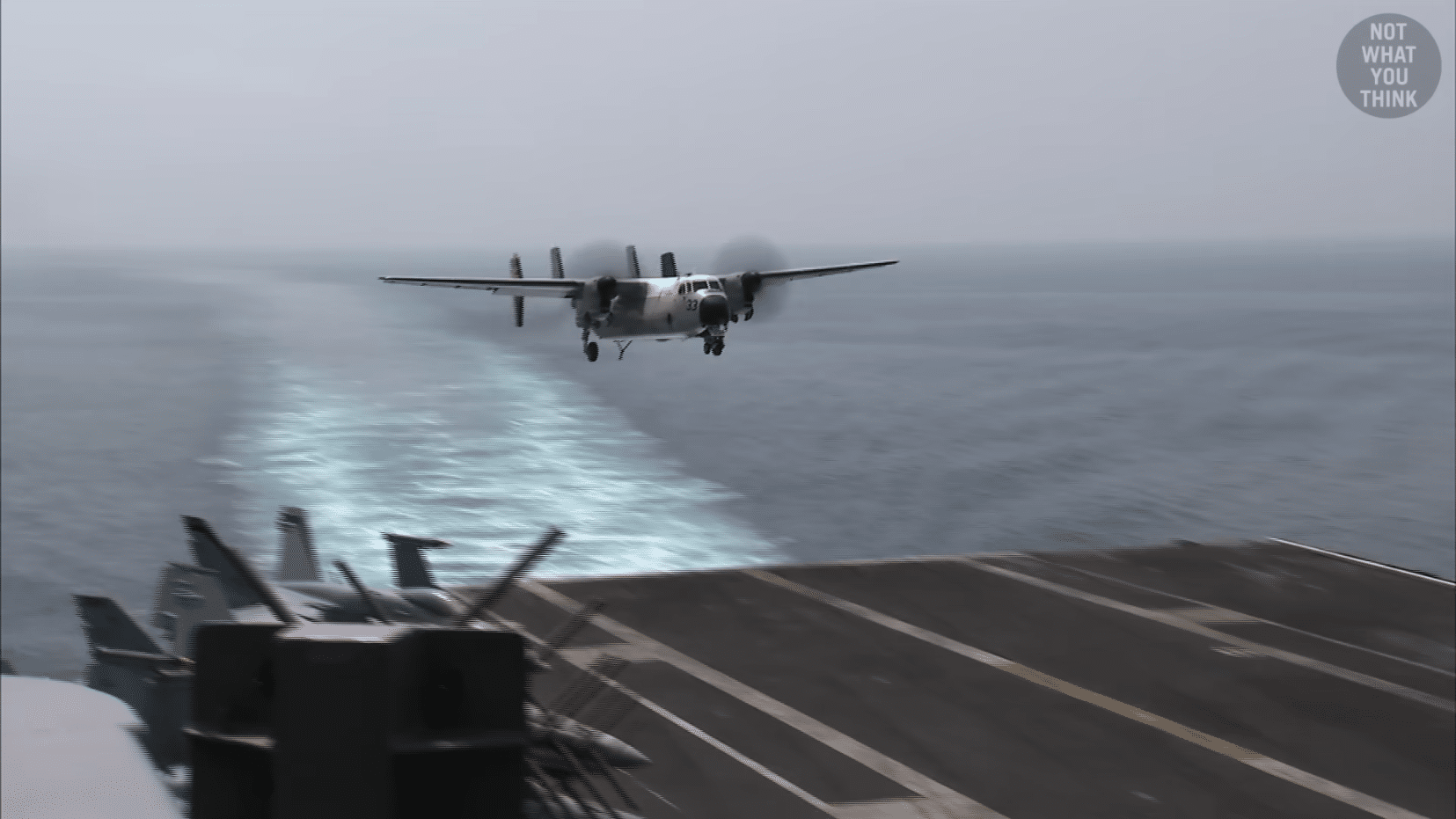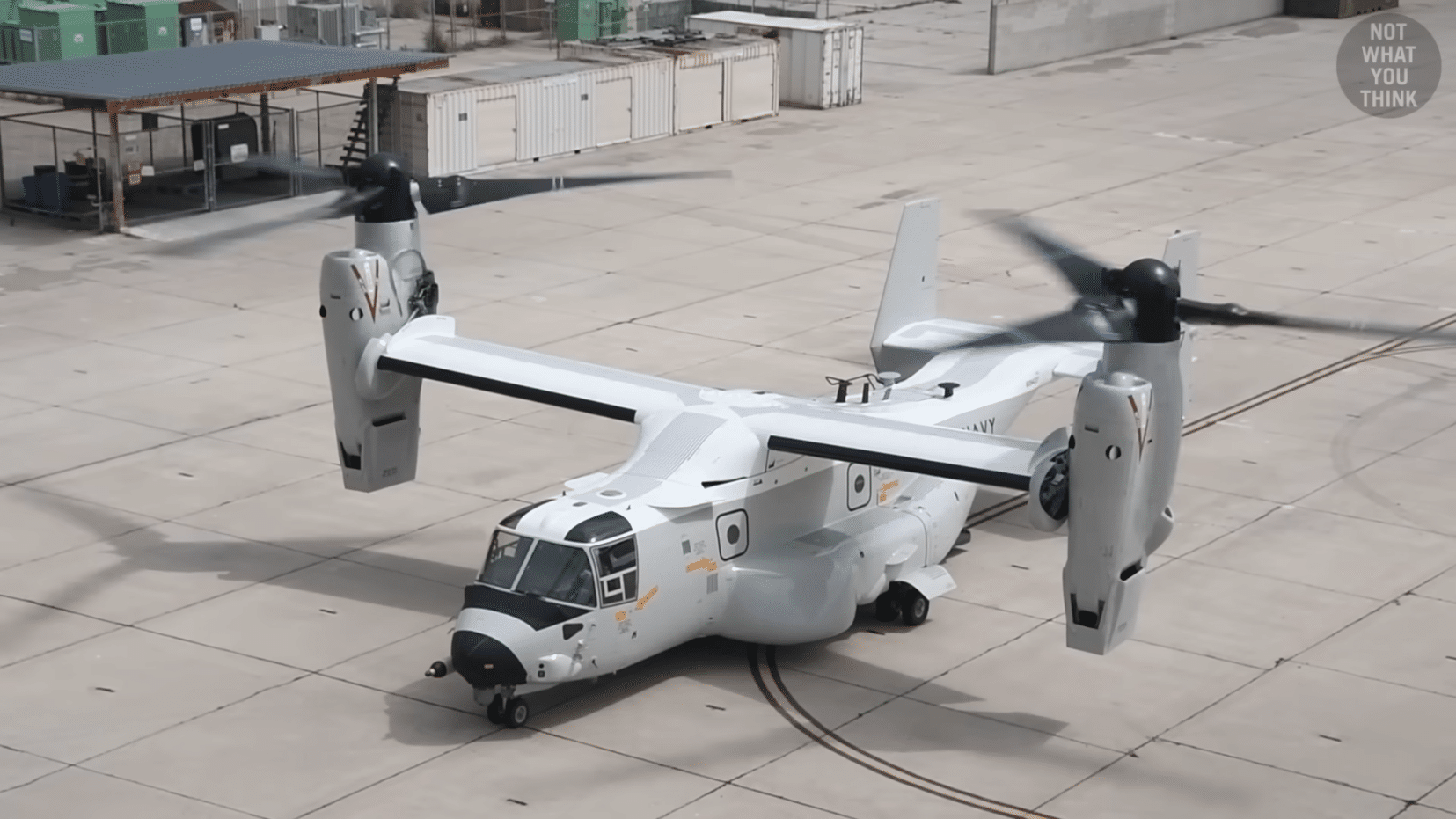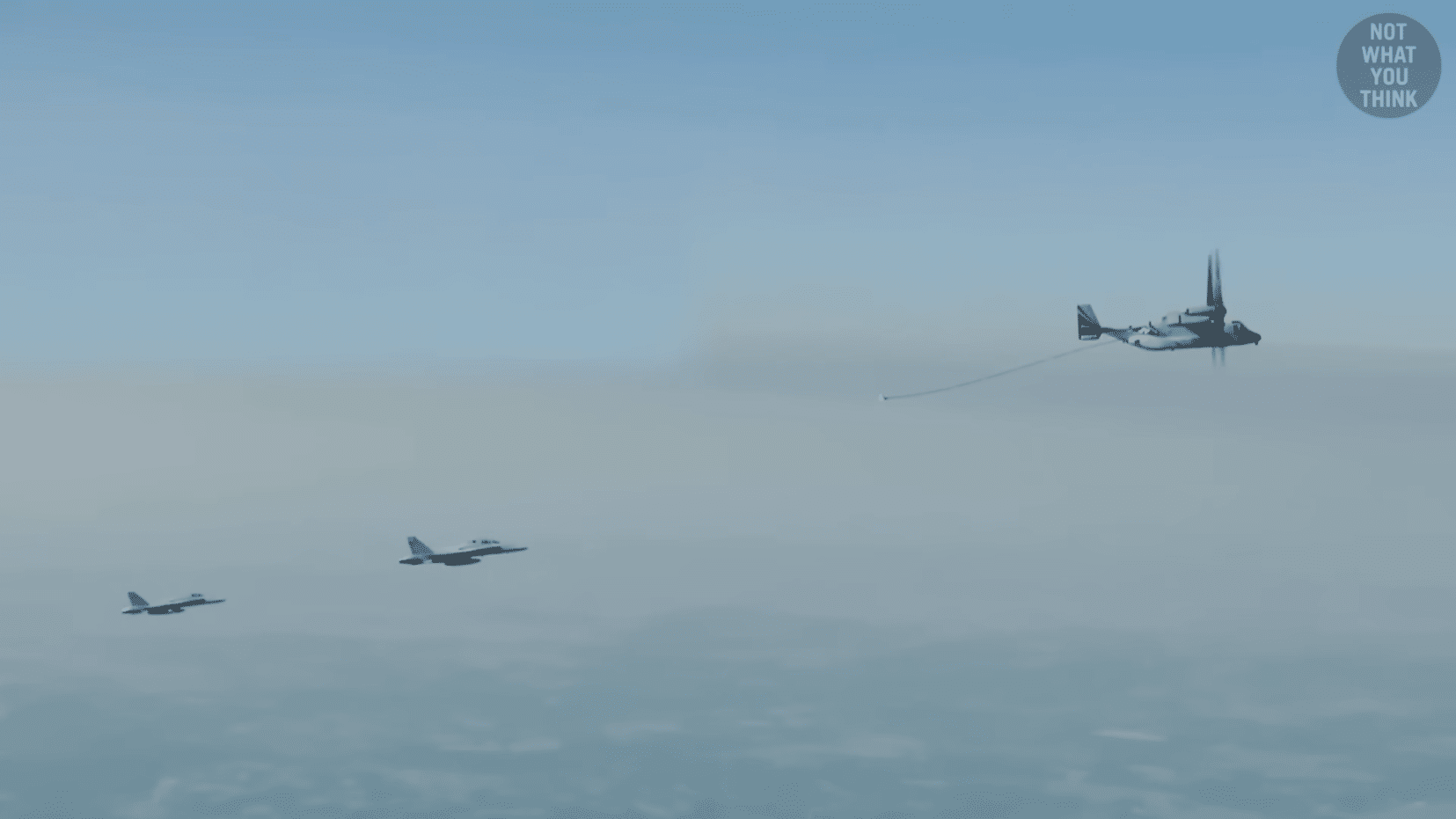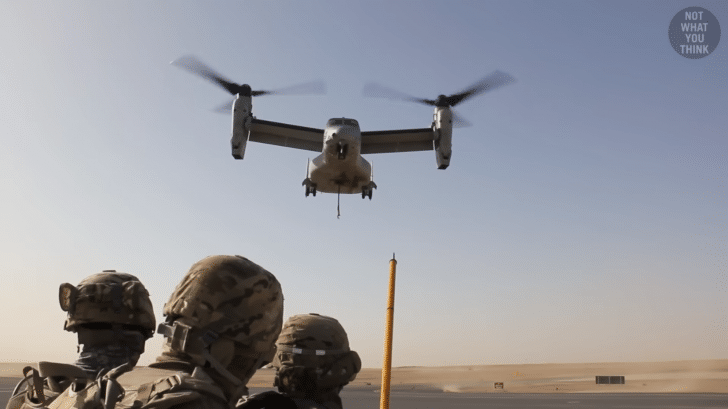Although the C-2A Greyhound had a long career with the US Navy since the 1960s, it’s now being replaced with the CMV-22 Osprey.
Perfect Replacement?
Can the Osprey do everything that the C-2 is doing right now? Absolutely, it can do so much more. It’s a tiltrotor that can take off and land like a helicopter, but transit as a turboprop aircraft.

A Comparison
The CMV-22 can carry less payload, 6,000 lbs, compared to the C-2’s 10,000 lbs. However, the Osprey makes up for it by carrying external cargo, letting it transport oversized loads that don’t fit inside the C-2.
When it comes to operational range, both planes have a similar range, except that the Osprey can be refueled mid-air, giving it more range when needed.
The Osprey’s Edge
The Osprey’s edge is its ability to perform vertical take-offs and landings.
While both planes don’t have the operational range to fly from a carrier, the Osprey can switch to “airplane mode” in horizontal flight, allowing it to fly so much faster than a helicopter.

Gamechanger
The CMV-22 has a cruising speed of 305 mph, almost twice that of conventional helicopters. It’s an absolute game-changer for the Navy since it can do much more than just deliver cargo.
It’s equipped with the V-222 Aerial Refueling System or VARS, allowing it to refuel other planes such as the F/A-18s or F-35s if needed. The Osprey can also be equipped with multiple mission packages, depending on the mission requirement.
A Problem
Although it might sound all good, there’s a little bit of a problem. Originally, the US Navy planned to procure 48 Ospreys, but as of December 2022, the US Navy only received 19 of them.
Moreover, the new Osprey is already a maintenance hog, with a cost per flight hour going up to around $24,000 compared to the C-2A’s hourly of $12,000.
Currently, the Navy only has enough Osprey airframes and personnel for the primary Carrier Onboard Delivery (COD) missions. To utilize its additional capabilities, more maintenance personnel, aircrews, and Ospreys are needed.




